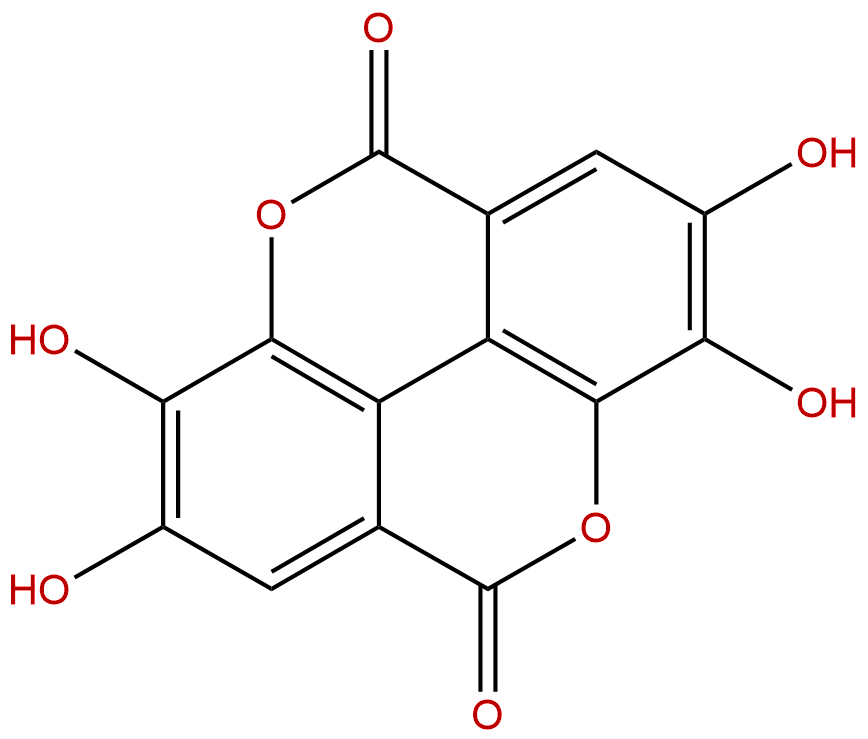
Ellagic AcidCAS No.:476-66-4
|
||||||||||
 |
|
|
||||||||

| Catalogue No.: | BP0529 |
| Formula: | C14H6O8 |
| Mol Weight: | 302.194 |
Product name: Ellagic Acid
Synonym name: Benzoaric acid; Elagostasine; Lagistase
Catalogue No.: BP0529
Cas No.: 476-66-4
Formula: C14H6O8
Mol Weight: 302.194
Botanical Source: Widely distributed in higher plants; found by Bate-Smith in 75 genera of dicotyledons and in only one monocotyledonous sp., Hypoxis filiformis
Physical Description: Powder
Type of Compound: Phenols
Purity: 95%~99%
Analysis Method: HPLC-DAD or/and HPLC-ELSD
Identification Method: Mass, NMR
Packing: Brown vial or HDPE plastic bottle
Storage: Store in a well closed container, protected from air and light. Put into refrigerate or freeze for long term storage.
Whenever possible, you should prepare and use solutions on the same day. However, if you need to make up stock solutions in advance, we recommend that you store the solution as aliquots in tightly sealed vials at -20℃. Generally, these will be useable for up to two weeks.
The product could be supplied from milligrams to grams, up to kilograms
Inquire for bulk scale.
Descriptions:
Ellagic acid, a naturally occurring plant phenol, inhibits the activity of the direct-acting mutagen N-methyl-N-nitrosourea (MeNU) in Salmonella typhimurium TA100, is due to specific inhibition of methylation at the O6 position of guanine through an ellagic acid-duplex DNA affinity-binding mechanism.[1]
Ellagic acid has anti-oxidant and anti-inflammatory properties, can inhibit key cell functions and activation of PSCs, including platelet-derived growth factor (PDGF)-BB, interleukin (IL)-1beta, tumor necrosis factor (TNF)-alpha, alpha-smooth muscle actin and collagen genes. [2]
Ellagic acid has antioxidant and apoptosis-inducing activities, shows high DPPH radical scavenging and peroxidation inhibition activities, significantly reduces HOS cell proliferation, and induces apoptosis evidenced by chromosomal DNA degradation and apoptotic body appearance.[3]
References:
[1] Dixit R, Gold B. P Natl Acad Sci USA, 1986, 83(21):8039-43.
[2] Masamune A, Satoh M, Kikuta K, et al. Biochem Pharmacol, 2005, 70(6):869-78.
[3] Han D H, Lee M J, Kim J H. Anticancer Res, 2006, 26(5A):3601-6.
[4] Ou L M, Seken A, Li K A, et al. Int J Pharm Res, 2015, 42(05):637-41.
HPLC of Ellagic Acid

NMR of Ellagic Acid
